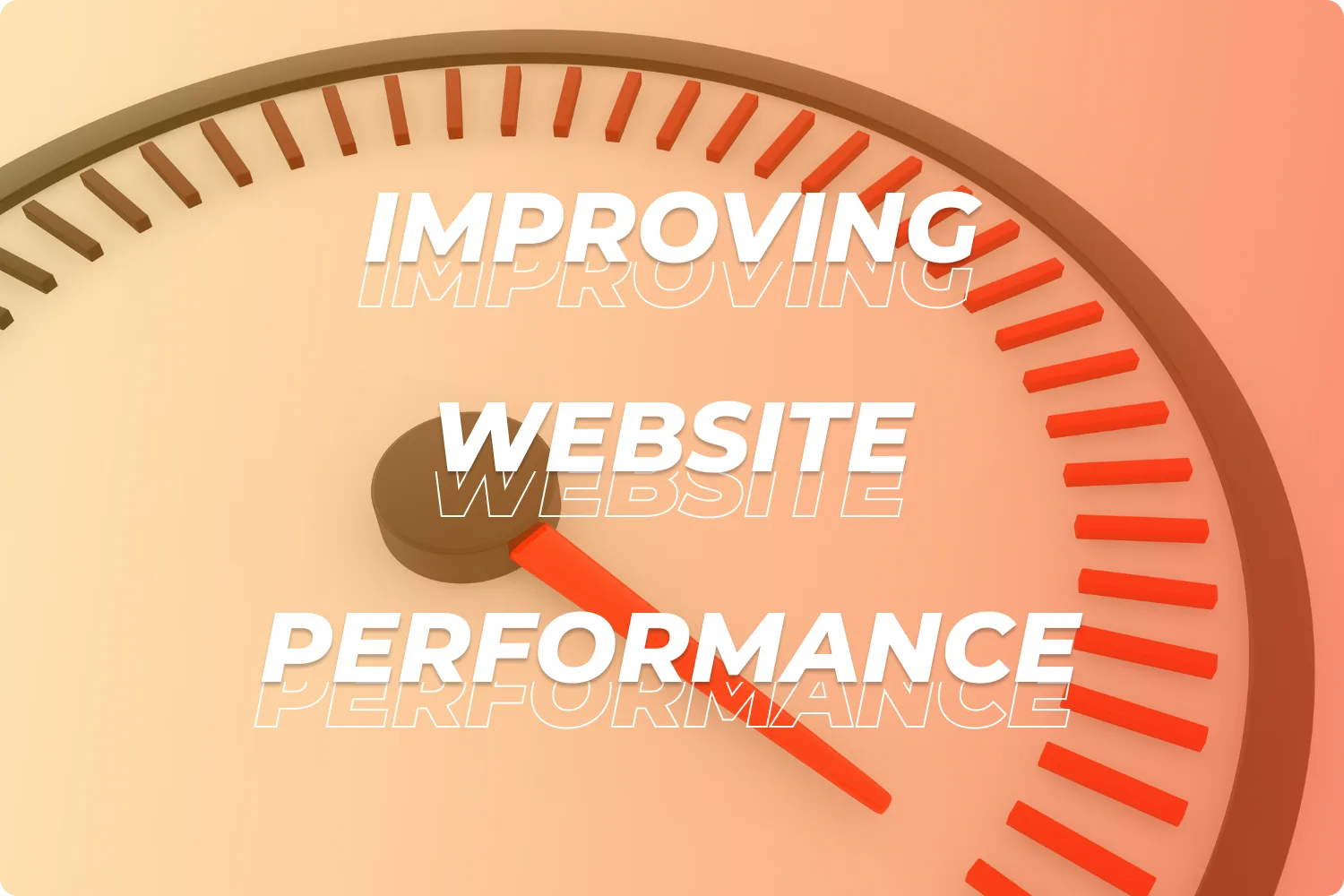Why Website Performance Matters: How Speed Impacts User Experience and SEO
With the rapid rise of the Internet and its unparalleled convenience, people are increasingly turning to digital platforms for their everyday needs—whether it’s shopping, banking, attending classes, or simply enjoying a movie for entertainment.
The pace of people’s lives has increased, and speed has become an absolute need today. Therefore, it is essential for businesses to optimize their websites in terms of speed, response time, search engine visibility (SEO), and user experience. A fast-loading website not only keeps the user happy and satisfied, but it also improves the site ranking on search engines like Google.
The Need for Website Speed
Social media platforms like TikTok and YouTube Shorts have become popular nowadays, but it has dramatically decreased internet users’ average attention spans. These platforms have raised the expectations of consumers by making them think that everything must be available instantly. This is also a reason why people have generally become impatient – making them increasingly frustrated with anything that needs some time. As a result, people are far more likely to quit a website that takes longer than a few seconds to load, frequently without hesitation.
Moreover, as mobile surfing has become common and there is an increased emphasis on Core Web Vitals by Google, the speed and efficiency of your website have never been more critical. Core Web Vitals is a collection of metrics that determines real-world user experience on different factors like loading time, interaction, and visual stability. Now, there is another challenge for business. They must not only ensure their websites are user-friendly, but also focus on speed and seamless performance across all devices and platforms to retain customers and stay competitive.
Let’s dive deeper to see the importance of website performance, how it affects user experience and SEO, and also what measures you can take to improve it.
Understanding Website Performance
Business and website performance go together. The success of any online venture relies on its performance. Website performance relates to how rapidly your site loads and responds to user inputs. This covers the time required to load pages, handle user input, and show graphic components. Server response time, file sizes, image optimization, and third-party scripts all have an impact on how quick (or sluggish) a website seems to consumers. Users are likely to stay if they are immediately responded to. A sluggish website can be harmful for your business. Statistics show that for every second your website loads faster, the conversion rate increases by 17%.
Google Loves SEO
As mentioned before, website performance affects not just your users, but also your search rankings. Google has historically considered website speed as a ranking factor. The advent of Core Web Vitals has made speed and performance even more important in SEO strategy.
Google announced Core Web Vitals, a suite of metrics for measuring real-world user experience on websites. They include:
- The First Input Delay (FID): This is used to measure interactivity. It should take less than 100 milliseconds.
- Largest Contentful Paint (LCP): It is used to determine loading performance. Ideally, it should happen within 2.5 seconds.
- Cumulative Layout Shift (CLS): This is used to measure visual stability. For optimal results, it should be less than 0.1.
Websites that meet these criteria are more likely to rank higher in Google search results.
How Speed Affects User Experience
User experience (UX) refers to how a visitor feels when they interact with your website. Any website that is fast will make the user happy and it will create a seamless journey for the user. Whereas a slow website leads to frustration and eventually lost opportunities.
It is a known fact that the first impression is the last impression and it’s entirely true when it comes to User Experience. A user usually has an opinion about your website within the first 50 milliseconds of opening a website. If your website is slow to load or has unnecessary delays, the initial impression may be unfavourable, regardless of your actual content or offers. For instance, consider two similar online clothes businesses. Store A loads in under two seconds, but Store B takes six seconds. Store A is more likely to retain visitors, lower bounce rates, and improve conversions simply because it provides a better user experience.
This is the reason that many big industrial players are paying special attention to the core web vitals and trying to increase the web performance. For example, Rakuten 24 invested in Core Web Vitals which increased the revenue per visitor by 53.37% and improved the conversion rate by 33.13%.
With mobile users, it’s even more complicated. With mobile devices accounting for more than half of worldwide online traffic, your website must be designed to work well on smartphones and tablets. Mobile users frequently suffer with poor networks, making speed optimization even more important. Load times are critical and organisations like BBC observed that they lost 10% of their overall users for every extra second it took for their websites to load.
Conversion Rates and Revenue
While maintaining users is critical for increasing conversions, performance may also have a significant impact on whether your website’s users follow through. Slow sites reduce income, but websites that are quick can enhance conversion rates and improve business outcomes. When it comes to conversions, every second counts.
According to Portent research from 2022, B2C e-commerce websites with pages that load in less than a second convert 2.5 times more than those with an average 5-second load speed. For B2B sites, this equates to three times higher conversions in the same time span.
Factors Affecting Site Speed
Your website is one of the first points of contact your consumers have with your brand, and the experience may make or break their view of it. Many companies are trying to understand how to increase their web performance. Some of the key factors that affect the speed include:
- Page weight: The amount of resources a website needs to load has a significant influence on its performance. Large JavaScript files, video content, large CSS files, and high-definition photos all contribute significantly to a webpage’s ‘weight’, or load time. It has become a challenge to keep websites light (i.e., with minimal file sizes and quick-loading pages) as web technologies have advanced and websites have grown in complexity.
- Poorly Structured Code: Bad code indicates poor performance. If your code is not organized properly then it will increase page load times and will affect the user experience negatively. Weak code, such as faulty HTML markup, JavaScript problems, or resource-intensive activities, can cause severe performance drops if left unaddressed.
- Hosting Location: When content must travel a great distance to reach its destination, network latency increases. For example, if a website’s HTML and CSS files are housed in an Ohio data centre and its photos are hosted in a Florida data centre, a user on the West Coast will have to wait as all of these files travel thousands of miles to their device.
- HTTP Requests: Every website utilizes the Hypertext Transfer Protocol (HTTP). To load a webpage, a web browser must first submit an HTTP request to the website’s hosting server. The server then returns the requested resource. Each resource request reduces load speed, thus the less requests you have, the better your site performs. For optimal speed, verify that your hosting provider supports HTTP2. HTTP2 is the current equivalent of HTTP1, and it is significantly quicker and more dependable.
Performance Metrics
In order to see how well your website is performing, you need to look at some crucial indicators. Each metric gives insights into a distinct part of the user experience and also assists in identifying where there can be an improvement:
- Time to First Byte (TTFB): This metric counts the time it takes for a user’s browser to send an HTTP request and receive the first byte of data from your server. A high TTFB may suggest server-side bottlenecks or poor backend logic. For example, a sluggish TTFB may indicate that your server is underperforming or that your database queries are overly complicated.
- First Contentful Paint (FCP): This indicates that the browser has rendered the first piece of content (text, picture, etc.). It’s an important indicator of perceived performance since it measures how quickly people see something beneficial. For example, if a blog loads its banner picture before any text, the FCP will represent that image’s appearance rather than the availability of the post content.
- Speed Index: The Speed Index assesses how quickly visible sections of the website are shown. Unlike FCP, it considers the full viewport experience. Lower values indicate quicker perceived loading. A page that loads above-the-fold material first will have a higher Speed Index than one that loads content from top to bottom.
Many free and commercialized tools are available to track these metrics like Google PageSpeed Insights, GTMetrix, and WebPage Test etc. These tools not only provide insights about the web performance but also suggest ways to improve it.
Improving Website Performance
Now that we know that performance plays an integral role in online businesses, it’s time to enhance the sales by implementing some best practices for increasing web performance. Here are some ways to improve it:
- Optimize images: Large pictures are a major performance killer. You can use WebP or any other contemporary to compress photos without compromising on quality.
- Reduce HTTP requests: Every file on your website including CSS, JavaScript, and pictures generates an HTTP request. This can eventually increase the load so as a best practice reduce them by merging different files and using CSS sprites.
- Use Browser Caching: Store bits of your website in the user’s browser to make return visits quicker.
- Use a Content Delivery Network (CDN): A CDN distributes your content across worldwide servers, allowing people to visit your website from the nearest area.
- Reduce CSS, Javascript and HTML: It is important to reduce file sizes and improve load times. This can be done by minimizing CSS, JavaScript, and HTML code by removing unnecessary characters and whitespace.
- Select a Reliable Hosting Provider: Your web host has a significant impact on performance. Select one that assures high uptime and quick server speeds.
- Implement Lazy Loading: This helps make sure that pictures and videos are only loaded when they enter the viewport, which speeds up the initial page loading.
- Implement GZIP Compression: GZIP compression decreases the amount of files transferred from your server to the browser, resulting in a considerable improvement in load time.
Conclusion
Nowadays, website speed is not just the concern of backend developers for code optimizations; it is a critical component that affects the businesses’ revenue. Now, content developers, UI/UX designers are paying special attention to it to enhance the visibility of websites and place it higher in Google ranking. In today’s highly competitive digital market, time is an integral asset. This is because, with reduced attention spans, even a few additional milliseconds of loading time can have an impact on the traffic and can lead to missed opportunities.
Google’s algorithms have a factor that improves the ranking of your website if it is fast and seamless. This means that poor performance can have a negative hit on your visibility and organic visitors. Beyond search results, there is an increase in the demands and requirements of customers, today’s online users want flawless and responsive interactions. If a website is taking time to load, then users are most likely going to exit and switch to any other site. This has a negative impact on businesses and can affect long-term client loyalty.
The key takeaway is that in today’s digital arena, speed isn’t simply an advantage; it’s a need. Hence proving that faster really is better.
Ready to Supercharge Your Website’s Performance?
Don’t let slow load times cost you traffic, conversions, and search rankings. At Function Eight, we specialise in building lightning-fast, SEO-optimised websites tailored to your business goals. Whether you’re revamping an existing site or starting from scratch, our expert team ensures your users enjoy a seamless experience—on any device, anywhere in the world.
Let’s build a faster, smarter website together. Get in touch now and see how Function Eight can transform your site into a high-performance digital asset.





